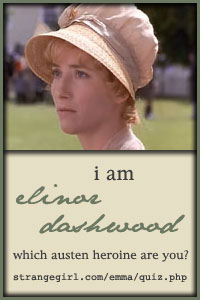I'm going through Lord of the Flies with my class right now, so I thought I'd write about it a little for this post.
Whenever I teach this novel, I face my students' frustrations with the language. Golding uses very dense, descriptive language throughout most of the book. Students find this confusing and even annoying. I freely admit that I sometimes am tempted to zone out when I'm reading his descriptions too. However, I tell them that Golding does not spend so much time on strong descriptions just for the heck of it. From the beginning of the novel, I ask them to consider why Golding uses imagery the way he does.
This semester, we began the novel with a passage from Chapter 1 that is particularly descriptive. After I read it, I had the students draw whatever they could remember. They then compared their drawings to other group members. Finally, I had them go back to the passage we read and pinpoint the particular lines that were most influential on their drawings. In this way I called attention to the power Golding's description has. There was not one student who said "I don't know what to draw," because Golding's images do stick in your head.
Last week we read the first two pages in Chapter Three out loud. These pages are devoted to describing the character Jack as he is hunting in the jungle. We pointed out the imagery used, including how Jack is likened to a dog and an ape, and then I asked them what the point was. Rather quickly a student responded that Golding was showing that Jack is becoming a little savage, and describing Jack as an animal helps to further that idea.
A little later in the novel, when things started getting particularly nasty on the island, I am going to do an activity where half of the class notes all the imagery describing the island they can find in the 1st chapter. The other half will note all the imagery they see in a later chapter. When we compare the descriptions we will see pretty clearly that in the beginning of the novel the island is described as a beautiful paradise, but by the near end of the novel the presence of the boys and their descent into savage behavior has destroyed this paradise. The island becomes menacing, terrible, and literally destroyed. When I have done this activity before, students have been struck by this.
I think these activities help to get students to understand that authors choose their words carefully. Description is not just pretty; it has a purpose. In the case of Lord of the Flies, the imagery directly correlates with some of the major themes of the book.
All of these activities with my students help me as a reader too. I am much more interested in characters and ideas than setting descriptions. It's just how I am. But by finding a purpose for description I gain a new appreciation of authors and what they are trying to do.
One thing I love about being a teacher is that I learn right along with my students. And what fun to keep learning about one of my greatest passions: reading!
Subscribe to:
Post Comments (Atom)






3 comments:
That sounds like a fabulous way to teach this book! I love the drawing idea (except I have art phobia, I'd struggle with that!) and comparing imagery between the beginning and later chapters. Now I want to read Lord of the Flies again!
As Terri said, that is an innovative way to approach the subject.
Also your reading of the book couldn't be more timely as this week is Banned Books Week and Lord of the Flies is one of the books that has been challenged again and again-- although, to be honest, I'm not sure why. Personally, it was one of my favorite books.
@terri - Thank you for your comment! I'm glad you liked the ideas.
@justareadingfool - Isn't it interesting that it was banned? My students are confused when I tell them that. Honestly, it seems like often books are banned when they come too close to truths about human nature that we don't want to accept. Lord of the Flies might fit in that category.
Post a Comment